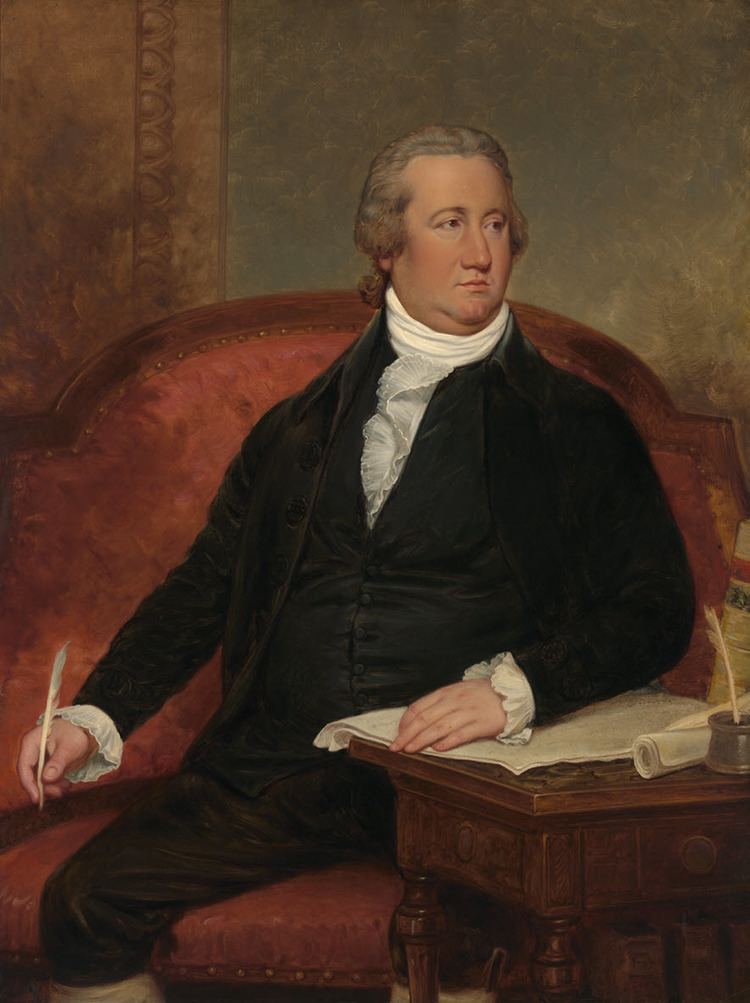 | ||
The Speaker of the House is the presiding officer of the United States House of Representatives. The office was established in 1789 by Article I, Section 2 of the United States Constitution. The Speaker is second in the presidential line of succession, after the Vice President and ahead of the President pro tempore of the Senate.
Contents
Unlike some Westminster system parliaments, in which the office of Speaker is considered non-partisan, in the United States, the Speaker of the House is a leadership position and the office-holder actively works to set the majority party's legislative agenda. The Speaker usually does not personally preside over debates, instead delegating the duty to members of the House from the majority party. The Speaker usually does not participate in debate and rarely votes. Aside from duties relating to heading the House and the majority political party, the Speaker also performs administrative and procedural functions, and represents his or her Congressional district.
In the modern era, the Speaker is elected at the beginning of the new Congress by a majority of the Representatives-elect from candidates separately chosen by the majority- and minority-party caucuses. In cases of an unexpected vacancy during a Congress a new Speaker is elected by a majority of the House from candidates previously chosen by the majority and minority parties. While no rule exists, based on tradition and practice from the earliest days of the nation, to be elected speaker a candidate must receive an absolute majority of all votes cast for individuals, i.e. excluding those who abstain. If no candidate wins such a majority, then the roll call is repeated until a speaker is elected. There have been 14 instances of Speaker elections requiring multiple ballots. The Speaker is traditionally the majority party's leader in the chamber, although unlike other House leadership, there is no Constitutional requirement that the speaker be an elected member of the House (every house speaker to date has been an elected member of the House). The most recent election to occur mid-way through a Congress occurred on October 29, 2015, when it elected Congressman Paul Ryan of Wisconsin to the office.
Since the office was created in 1789, 54 individuals, from 23 of the 50 states, have served as Speaker of the House. The number from each state are:
The longest serving speaker was Sam Rayburn, who served on three separate occasions between 1940 and 1961. Tip O'Neill had the longest uninterrupted tenure as speaker, serving January 4, 1977 – January 3, 1987. Theodore M. Pomeroy had the shortest tenure of any speaker, serving March 3–4, 1869. Six speakers—Henry Clay, Joseph William Martin, Jr., Frederick Muhlenberg, Sam Rayburn, Thomas Brackett Reed, and John W. Taylor—served non-consecutive terms of office. One Speaker, James K. Polk, went on to become the 11th President of the United States. Two, Schuyler Colfax and John Nance Garner, later became Vice President; additionally, Paul Ryan ran unsuccessfully for the office in 2012, prior to election as Speaker. In 2007, Nancy Pelosi became the first woman to serve as the House Speaker.
Speakers of the House of Representatives
The House has elected a new Speaker 124 times since 1789. Of the 54 people who have served as Speaker over the past 227 years, 32 served multiple terms. In some instances, those terms were non-consecutive. While listed multiple times, those with breaks in their time as Speaker been assigned only one index number.
Speakers by time in office
The length of time given below is based on the difference between dates; if counted by number of calendar days all the figures would be one greater. Also, as many speakers were elected multiple times, and to terms that were, in several instances, not consecutive, the length of time given for each speaker measures their cumulative length of incumbency as speaker. Further, time after adjournment of one Congress but before the convening of the next Congress is not counted. For example, Nathaniel Macon was Speaker in both the 8th and 9th Congresses, but the eight-month gap between the two Congresses is not counted toward his service. The exact dates of service for each individual speaker is shown in the Term of service column of the above table.
Living former speakers
Since the resignation of John Boehner on October 29, 2015 there are four living former speakers. The most recent former speaker to die was Jim Wright (1987–1989) on May 6, 2015. The most recently serving former speaker to die was Tom Foley (1989–1995) on October 18, 2013.
